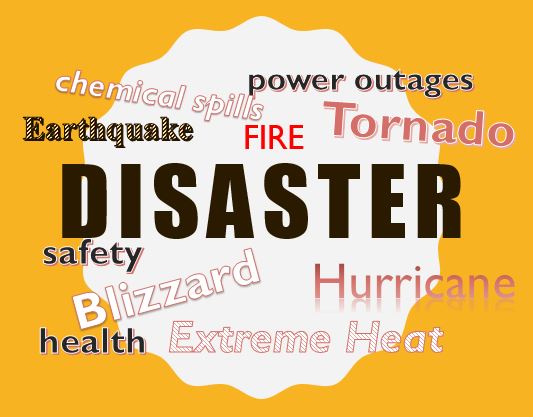Elders and those with special needs (chronic disease, mobility issues, disability, dementia) are especially vulnerable during emergencies. Death and injuries are common in this group during extreme heat waves, flooding, tornadoes, hurricanes and snow storms.
In statistics from a typhoon in the Philippines, one out of three people who died were over the age of 60 (even though they represented less than 1/10 of the population). During Hurricane Katrina, more than 70% of those who died were elderly.
Why do elders suffer disproportionately during emergencies?
- Difficulty getting out of harm’s way: 42% of Americans 65+ have a mobility/functional issue that could make dealing with an emergency difficult.
- Reluctance to evacuate: due to a feeling of safety at home, worries about exposing vulnerability (therefore someone might make them move away from home), complacency due to not experiencing problems in the past, or lack of knowledge of options. Surviving past disasters is no predictor of what will happen in the future (emergencies vary, as does the person’s current ability to manage).
- Chronic conditions can quickly worsen. About 75% of Americans 65+ have 2 or more conditions and take several medications. Without access to medication and assistance (and with added stress, heat/cold, etc.), conditions which are normally well-managed can quickly become severe.
- Survival often depends on self-preserving when cut off from support networks (for potentially long periods). When electricity is out from various disasters, elders may be stuck in high rises with no elevator. It may be impossible to get supplies or services for a few days to a few weeks.
Tips for Better Disaster Preparedness:
- Understand potential threats. What types of natural disasters and weather would be expected in your area? Assess your location and the scope and severity of threats. Don’t become complacent because you have not had a problem before.
- Locate resources. Read your county/city’s information about natural disasters, shelters and assistance. Follow our Aging Wisely blog or sign up for our newsletter for expert tips and special help.
- Assess your readiness to respond to/self-preserve in a likely emergency.Could your chronic conditions become a problem? How well can you do with no support services? Will you become ill in the heat or cold, or without electricity and hot water?
- Assess and prepare your home. You might need to make structural improvements (roof repairs for storms, wind-resistant windows, securing doors) and do preparations like cleaning out gutters, trimming trees and removing debris. Backup power options such as generators and battery packs/power banks can be useful as losing power is quite common in many emergencies. Check smoke detectors and fire extinguishers. Clear clutter and fall hazards. Know your home’s risk level (flood zone/location, age/security, mobile homes) to determine whether sheltering in place is feasible (and, in what conditions).
- Get a battery-powered or hand-cranked radio (a NOAA weather radio is ideal).
- Assess your support network. How can friends, neighbors and family help? What support services do you rely on and will they be available during an emergency? Can you seek shelter with a friend or loved one who may live in a safer area or be able to help you?
- Determine evacuation (or alternative stay) options. Emergency shelters are designed as a last resort, but you should be registered with your county/city should you need them. If you plan to evacuate to a safer area, consider issues like traffic and road safety (and your access to resources away from home). Respite stays in an assisted living or nursing facility can be a wise plan as they have to prepare for such emergencies for their residents and offer a level of comfort and support you cannot get at a shelter. Having others around can also be comforting.
- Prepare supplies. You can access our hurricane supply checklist (which applies to many types of disasters). The Red Cross offers a basic emergency kit list (you can also buy first aid kits and supplies through them), though we’d recommend preparing two-week supplies when sheltering in place, as services and supplies can be delayed for days-weeks. There are various emergency kits you can buy online (but you’ll need to add personal items, like your food, water, medications, etc.). If you have a pet, check out EasyLiving’s pet prep checklist.
- Make a communication plan. Have a cell phone with chargers (extra batteries, power banks and car chargers are useful when electricity is scarce) and your contacts programmed into it. Decide how you will communicate vital information (and relatives should coordinate plans to check in).
- Prepare important documents. Put your insurance papers, a list of contacts, medical history/medication list, advance directives, home documents and key account information into a waterproof container that you can access easily and take with you when evacuating.
If you need help assessing your situation and preparing, contact Aging Wisely at 727-447-5845. Our team can help with comprehensive disaster planning, as well as advice and resources. Follow us on Facebook for the latest news and tips.

 Popular Downloads
Popular Downloads


 Get Our Newsletter!
Get Our Newsletter! Mission Statement
Mission Statement

